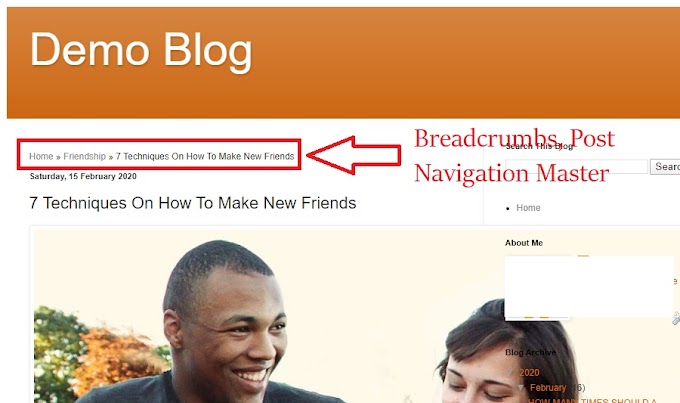Read also:
Blogger Review - 15 Pros And Cons Of The Blogger Platform
See the infographic below, these are Custom Header Tags For Blogger Blog
all
If you set this tag, crawlers are not bound by any limitations. They can freely crawl, index and expose your articles.
noindex
Not all of the sites are for public notice. Even in the event that you don’t discuss the URL of your personal blog with anyone, chances are people will soon come to it from search results. In such a scenario, you may use noindex tag since it prevents search engines from indexing the pages.
nofollow
Nofollow and dofollow tags are for outbound links. Dofollow is the default robot label for many of your links. That means the search engines can sneak upon the blogger page that you linked to. If you don’t want search bots to check through your own links, the inclusion of a nofollow tag must help you.
noone
none combines the f features of both noindex and nofollow tags. The crawlers will neither index your pages nor skim through the links.
noarchive
You might have discovered a cached label with the majority of the web site links on SERPs. It shows that Google has captured a copy of your website in their server to show in case it goes down. That being said, that the noarchive tag turns off cached version in pages
nosnippet
The text snippets in search results help people discover what is on the webpage. If you want to keep the content exclusive, you can turn this header tag on
noodp
Open Directory Project or Dmoz is a man-made directory of websites. Google uses the information out there sometimes. It is possible to turn it off using this label if you want to
notranslate
Would you want to disable translation on your website? Then utilize notranslate to the exacte intent.
noimageindex
Should you allow Google to index your images, people can steal it and use it on their own sites. To stop that, you can keep the images deindexed using noimageindex tag.
unavailable_ after
In Blogger, you will find a field right for this tag. Thus, the page will be deindexed Following This moment.
How to Set up Custom Robots Header Tags on Blogger Blog
I know you are a blogger blog user that is why you are here in the first place looking forward to increasing your search engine exposure for organic traffic. If so, I recommend following this guide and enabling the custom robots header tags for maximum search engine visibility. Now that you know what custom robots header tags are, follow the guide and set it up for Search Engine Optimization.Step 1: Visit blogger.com and sign in to your account. From the list of your blogs, choose the one for which you want to modify robots tags. If you have only one blog, then you need not to make any selection, you are good to go, but if you have multiple blogs, then select the one you would like to set up the custom header tags for. See the infographic below for more information.
Step 2: Then go to Settings >> Search preference. There you can see a setting called Custom robots header tags under Crawlers and Indexing. Click the Edit link to the right of it. see the infographic below for more information.
Step 3: Now enable the Custom Robots Header Tags by selecting “Yes.”
Congratulations! You have done it. Trust me custom robots header tags are powerful! As Google provides a readymade setup to use them, why don’t you go for it? And, don’t tick noindex checkbox until and unless you are sure about it because doing the same will pull your website off from search engine result pages (SERPs). Let me know if anything bothers you regarding this topic through the comment form down below.
full-width















11 Comments
I find this tutorial very comprehensive and comprehensible. I've implemented the procedures on my blog www.lionobo.blogspot.com . Thanks..
ReplyDeleteThanks too, Olarewju Blessing
DeleteThanks for sharing.
ReplyDeleteAccording to your explanation, "noindex" will prevents search engines from indexing pages.
(1) Why do you then ticked it in the "archive and search pages" ?
(2) Why do you also chose noodp in other section.?
(3) in my opinion, i think we need to tick the "all" boxes in all the three categories, what happens if done so?
Please i need more clarifications.
Thanks once more and God bless.
Thanks for the comment and sorry for the late reply! Let me answer your question straightforward
Delete1. The archive and search pages are already in the sitemap submitted on google and other crawlers. So there is no need to tick "All". This has been indicated and ticked in the third section Under "Default For Post and Pages". Experts say ticking 'All" under the archive and search pages will lead to duplicate content.
2. NOODP means No Open Directory Project and it is a directive which tells the search engine crawlers not to use metadata from the Open Directory Project for titles or snippets displayed in search results for the particular page. So it is good to tick it for SEO purposes!
3. Yes, you can do so. What will happen is that all your site will be crawled by bots.Including unnecessary pages on the site.
Really Helping Post! Thanks BloggerBD
DeleteI must say that your blog is very educative. I have tried your tutorials on Arewa Republik and they are well coded. Thanks.
ReplyDeleteReally Helping Post! Thanks BloggerBD
ReplyDeleteI tried your suggestions. Hope it will work well with my blogsite. Thanks
ReplyDeletewow nice information sir
ReplyDeletewww.debrajcode.com
ReplyDeleteこの元気の出る投稿を読んだ後は、楽観的になり、世界を征服する準備ができたように感じずにはいられません。 この反応時間テスターを定期的に使用すると、応答時間の顕著な改善が見られます。 強くお勧めします !
ReplyDelete